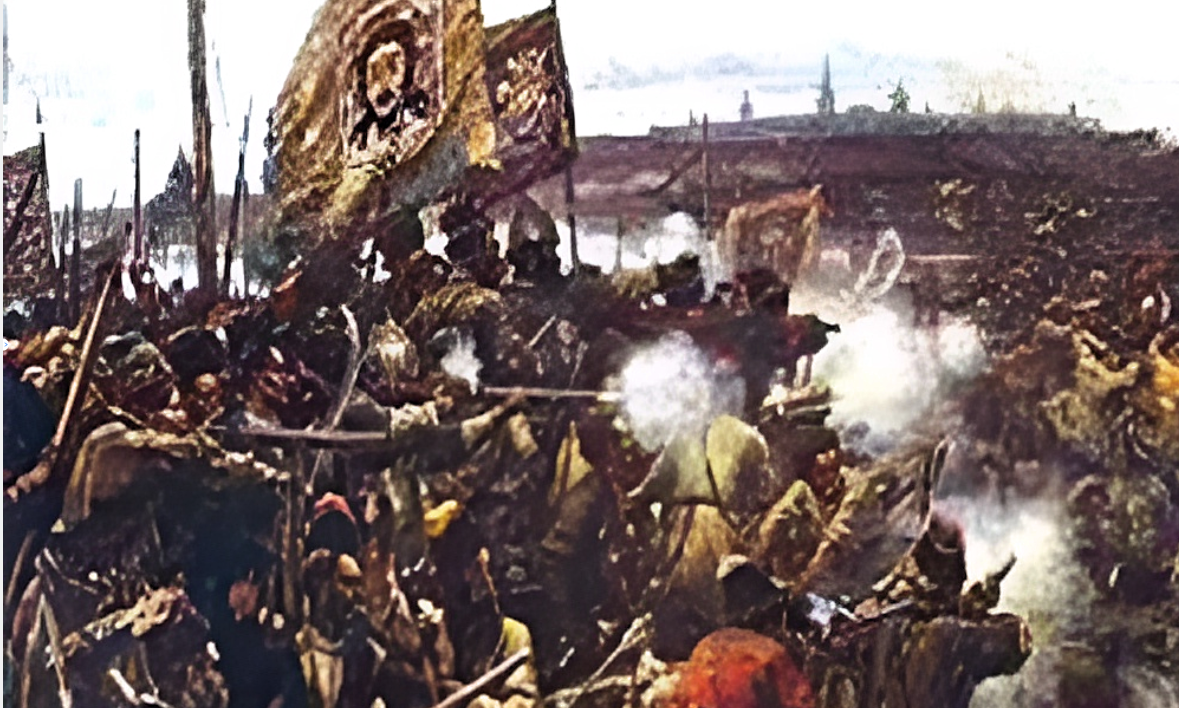Tatars and Bashkirs: A little story

If it seems to you that the tensions between the Tatars and Bashkirs, that can often be observed on various resources, are historically justified, and not inspired by the Kremlin, then here you have the material published by the Free Caucasus back in 2006.
In any national liberation uprising after 1552, the Tatars and Bashkirs went out onto the battlefield shoulder to shoulder, together celebrated victories, and together buried the fallen. Until 1742, Ufa province was under Kazan. After that, and again, in order to separate the two related peoples, this province was handed over under Orenburg territory or made a separate province. Menzelinskiy district and the entire Bugulminskiy territory, almost completely consisting of the Tatars, were handed over to Ufa, Orenburg, Kazan subordination and looked like poor orphans without relatives.
And the main severity of all liberation uprisings was carried, first of all, these two districts. The main, decisive battles with punishers took place in the territories of such districts as Actanyshskiy, Muslyumovskiy, Menzelinskiy, Tukaevskiy, Sarmanovskiy, Zainskiy, Aznakaevskiy, Almetevskiy, Cheremshanskiy, Leninogorskiy, Bugulminskiy, Utazinskiy, Bavlinskiy, that were once subordinate to Ufa or Orenburg administrations, and now constitute part of Tatarstan.
The Tatar peasants of these areas often became decisive force during uprisings, and they were the first to meet punishers, more often than others were subject to robbery, brigandage from the Russian regiments. We would like to discuss one more point. Thousands of representatives of the Tatar people, escaping from enslavement and violent baptism, began to run away in Zakamye and settle along such rivers as Belaya, Ik, Syun, Chermesyan, Tanyp, Tulva, Ufa, Ai immediately after the fall of the Kazan Khanate. Back in the XVI-XVII centuries, judging by historical documents dated 1574, 1682, 1705, 1711, such Tatar villages as Karyshbashevo, Kigi, Atov, Yukalikulevo, Turyshevo, Yavgildi, Arslanovo, Mustafino, Tulyukovo, Tamyanovo, Seitovo, Ilmurzino, Baiguzino, Imangulovo and dozens, dozens of others were founded on the territory of present-day Bashkortostan.
Having settled on the territory of the semi-nomadic people, the Tatars immediately began to erect mosques, open the madrasah, mastered agriculture, exchanged brides, and celebrated joint weddings. There was a natural assimilation of the Tatar and Bashkir peoples under these conditions. And, of course, when the punitive regiments entered their lands or Russian colonialists robbed them, the Tatars and the Bashkirs jointly defended each other, and together suffered all the hardships and shortages.
Apparently, this is why the Bashkir elders always met more and more new immigrants Tatars with open arms and endowed them with forests, lakes, meadows, land. In order to separate two related peoples, at the beginning of the XVIII century the tsarist government repeatedly sent regular regiments to forcibly return the fugitive Tatars to Kazan district. But wherever the Russian troops appeared, the Bashkirs were the first to defend the Tatars. The issuing of a special decree by Anna Ioannovna in 1736 on the prohibition of marriages between Tatars and Bashkirs did not help. Tatar families still continued to settle between Kama and the Urals, and these lands hundreds of years ago became native for them.
To confirm our words, we also give numbers. If in the middle of the XVIII century there were 412 thousand inhabitants in Bashkortostan, then more than 200 thousand of them were immigrants. At that time (already at that time!), the tsarist officials divided the Tatars into three groups: Teptyars, Mishars and Kazan Tatars (the Bolshevik leadership surpassed them: today Tatars were divided into Kazan, Siberian, Crimean, Nogai, Astrakhan, even Nizhgarsk). In 1747, 57,500 Teptyars and 10,100 Mishars lived in Bashkortostan.
There is no specific data about Kazan Tatars. The data that appeared later are known: in 1917, 650 thousand Tatars lived here, while in 1920, Bashkirs amounted to 524 thousand (R. Sibagat. Bashkortostan tatarlary Nem alarnyts of the tele. “Kazan ut-lary” 1992, ?1). Let us return, however, to the history of the national liberation struggle and pay attention to another feature. Wherever the uprising flashes, in the XVI-XVII centuries the main blow of the rebels, as a rule, was aimed at the most important outposts of Russian colonialists – Ufa, Menzelinsk and Kazan.
It was here that Russian punitive detachments and insatiable tsarist officials were focused. During the uprisings, the inhabitants of almost all Tatar villages located between Ufa and Kazan were actively included in rebel detachments. And often it was they who became the decisive force in the struggle against the colonialists.
Accordingly, the punishers brought down their bloody blows primarily on the Tatar villages, which are now part of Sabinskiy, Pestrechinskiy, Baltasinskiy, Mamadyshskiy, Rybno-Slobodskiy, Aznakaevskiy, Elabuzhskiy, Menzelinskiy, Aktanyshskiy, Tukaevskiy, Sarmanovskiy, Muslyumovskiy, Bugulminskiy, Agryzskiy and others districts. Based on the above arguments, we can fully confirm that all the uprisings of the XVI-XVII centuries are nothing other than the joint struggle of the Tatar and Bashkir, and often the Mari, Chuvash, Udmurt peoples against the colonial yoke.


Leave a Reply